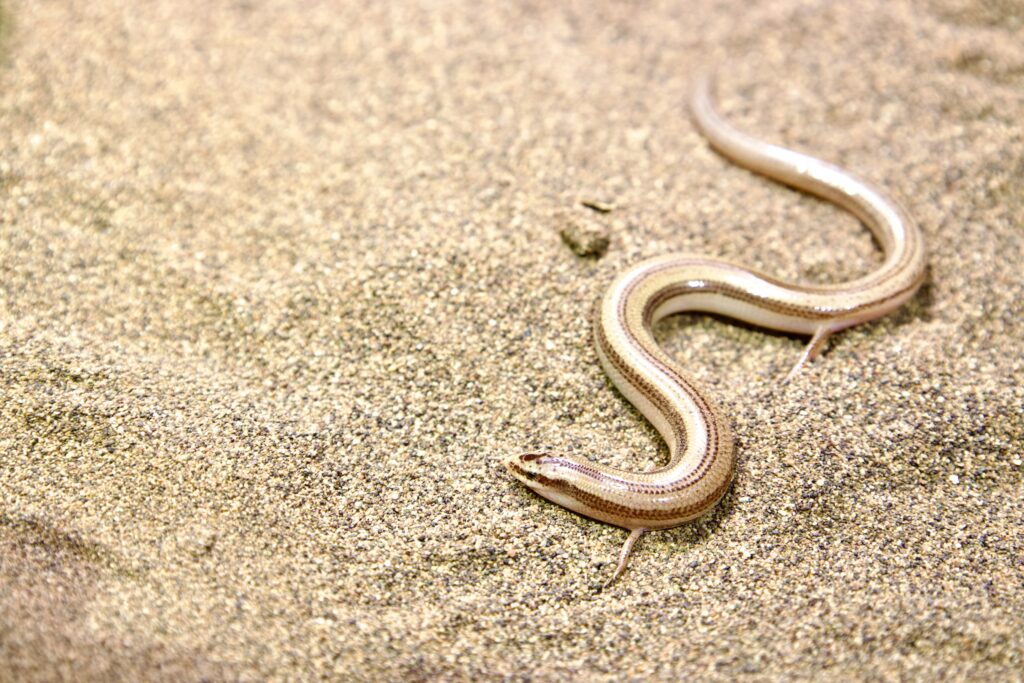Snakes and lizards are both fascinating members of the reptile family, each having evolved unique adaptations over time. They belong to the same order, Squamata, but lead very different lifestyles. These differences span from their appearance to their internal structures, significantly influencing their behavior and ecology. Below, we detail the main differences between snakes and lizards and the evolutionary background of these differences.

Snakes and lizards are both fascinating members of the reptile family, each having evolved unique adaptations over time. They belong to the same order, Squamata, but lead very different lifestyles. These differences span from their appearance to their internal structures, significantly influencing their behavior and ecology. Below, we detail the main differences between snakes and lizards and the evolutionary background of these differences.

Appearance and Movement
Presence of Legs and Modes of Locomotion
Lizards have legs, whereas snakes do not. Lizards use their limbs to walk, run, and even swim. Their limbs enable them to move swiftly on the ground, climb trees, and navigate rocky terrains.
In contrast, snakes move by undulating their bodies. They use their back muscles to create wave-like movements, gripping the ground with their ventral scales. This unique form of movement allows snakes to glide smoothly over flat surfaces and navigate obstacles efficiently.

Differences in Belly Scales
The belly of a snake is lined with long scales arranged in a single row, called ventral scales, which provide grip as the snake moves. These scales often have a thin layer of oil, making them smooth to the touch. On the other hand, lizards, which use their limbs for movement, often have finer and softer scales on their bellies, providing flexibility. Many lizard species have a slightly squishy belly when touched.
Defense Mechanisms and Shedding
Tail Autotomy vs. Skin Shedding
When threatened, many lizard species can detach their tails in a process known as autotomy. This behavior distracts predators, allowing the lizard to escape. Many lizards can regenerate their tails over time.
Snakes, on the other hand, regularly shed their skin. Shedding helps them grow, remove old skin, and get rid of parasites. Many snakes shed their skin several times a year, usually shedding the entire skin in one piece.

Differences in Internal Structure
Lungs and Respiratory Organs
Lizards have two functional lungs, which enhance oxygen supply and support an active lifestyle. In contrast, most snakes have only a functional right lung, with the left lung being vestigial or very small. This adaptation suits their elongated bodies and helps optimize the placement of internal organs.
Jaw Flexibility
Lizards generally have fixed jaws suitable for chewing their prey. Snakes, however, have highly flexible jaws that allow them to consume prey larger than their own size. The ligaments connecting the upper and lower jawbones are extremely stretchy, enabling snakes to open their mouths wide to swallow large prey whole.
Differences in Diet
Generally, lizards exhibit a wide range of dietary habits, including carnivorous, herbivorous, and omnivorous diets, depending on the species. In contrast, all snake species are carnivorous, feeding on mammals like rodents, amphibians like frogs, and sometimes even other snakes. Carnivorous snakes often occupy higher positions in the food chain in their natural habitats.
Summary
- Presence of Legs: Lizards have legs, while snakes do not.
- Modes of Locomotion: Lizards use their limbs for movement, whereas snakes move by undulating their bodies.
- Hearing: Lizards hear through external ear openings, while snakes sense vibrations through their skulls.
- Vision: Lizards can blink, while snakes’ eyes are covered by transparent scales.
- Defense Mechanisms: Lizards can detach their tails to escape, whereas snakes shed their skin periodically.
- Lung Structure: Lizards have two functional lungs, while snakes usually have only a functional right lung.
- Jaw Flexibility: Snakes have highly flexible jaws, allowing them to swallow large prey.
- Dietary Differences: Lizards have diverse diets, while all snake species are carnivorous.





コメント